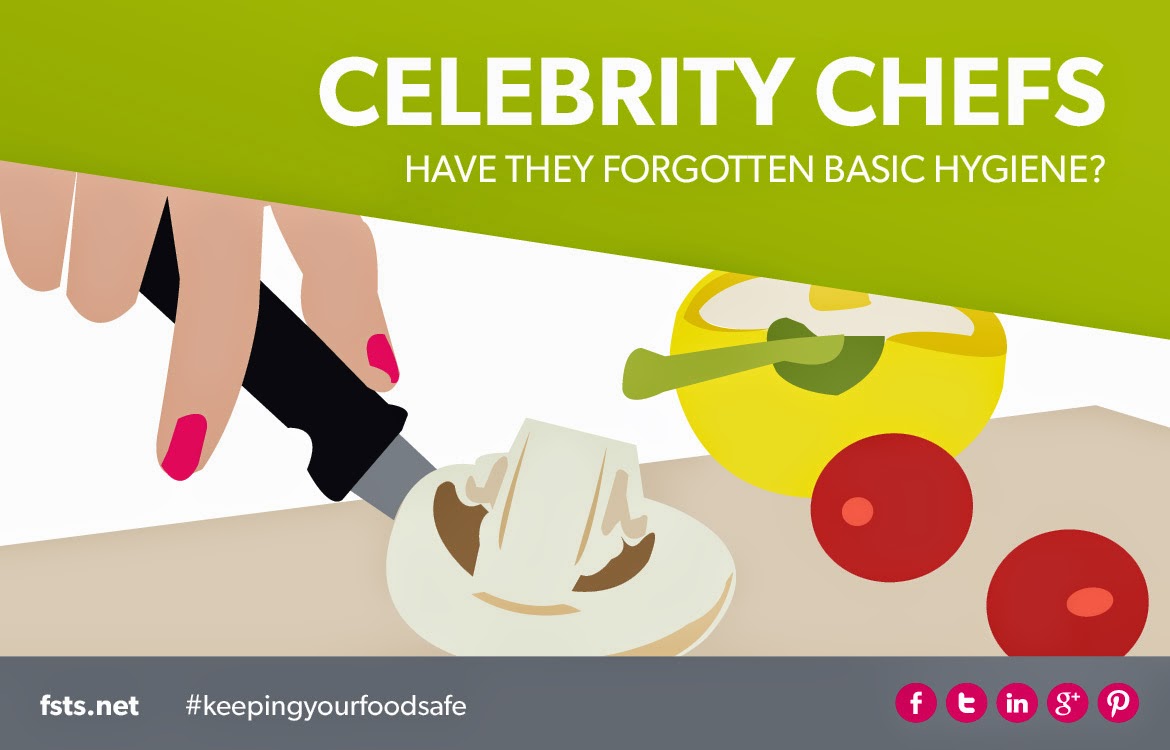During the past eight years, I have trained nearly 10,000 people for food manager certifications nationally and internationally.
On a weekly basis, someone brings up a celebrity chef and talks about what he or she viewed on a televised program. Bam! I have to undo the damage that’s been done.
In other words, if a huge celebrity chef can do it on TV, why can’t I?
Let me tell you, Gordon Ramsay’s primary responsibility when filming “Hell’s Kitchen” isn’t food safety, it’s entertainment. The same rubrics apply for Tom Colicchio and the filming of “Top Chef.”
Then we move to morning television. Flashback to November 2012 and Martha Stewart, self-proclaimed queen of anything and everything domestic, was confined to bed for several days after becoming ill with salmonella. She had made her rounds on the daytime talk shows, preparing turkeys for the Thanksgiving holiday. I remember thinking, “I wish they would show her wearing gloves or washing her hands.” Apparently, she did neither, or at least not well.
Yes, celebrities get sick, too.
In December, Giada De Laurentiis was on “The Today Show” preparing ready-to-eat foods with her bare hands. But worse than that, she had a bandage on her finger.
Where was the finger cot? Where were the single-use disposable gloves?
This will certainly send any health inspector or food safety professional over the proverbial edge. Is there any responsibility as far as the media is concerned, or is it simply entertainment?
If I was inspecting a kitchen she was working in and this was happening, it certainly would be a violation. Foodborne illnesses such as Staphulococcus aureus, Hepatitis A and Norovirus can spread rapidly via improper personal hygiene such as not properly washing one’s hands or washing improperly. Wearing single-use gloves is an added precaution to prevent the spread of illness.
An unbandaged, uncovered wound just adds insult to injury.
The fact is, often the food you see celebrity chefs preparing isn’t what the audiences are consuming, but viewers assume it is. In reality, the food is prepared in a professional kitchen that you don’t see on the air.
Here are six food-safety tips for any kitchen, whether it belongs to a home chef or a celebrity chef:
1. Wash your hands. Always wash your hands with hot, soapy water for at least 20 seconds before and after handling food. Dry with a paper towel.
2. Two-hour rule. Refrigerate or freeze perishables, prepared food and leftovers within two hours. Do not leave them sitting out at room temperature. Bacteria grows rapidly at room temperature.
3. Thaw laws. Always thaw food in the refrigerator. Never defrost food at room temperature on the counter top or in the sink. It is acceptable to thaw frozen food under running water at a temperature of 70 degrees or below.
4. Cutting-edge guidelines. Wash cutting boards and knives with hot, soapy water after food preparation, especially after cutting raw meat, poultry or seafood. Clean utensils and cutting boards between uses when meat has been on them. Sanitize cutting boards and counters with a diluted bleach solution. Add 1 Tablespoon bleach to a gallon of water; put in a spray bottle for easy use.
5. The raw deal. Never place food on the same plate or cutting board that previously held raw meat, poultry or seafood unless the cutting board has been thoroughly washed and rinsed.
6. Mindful marinating. Always marinate food in the refrigerator, not on the countertop. Discard leftover marinades that have been used with raw meat, poultry or seafood.
I am not familiar with any celebrity chefs who are ranking food-safety trailblazers. Let’s let the food-safety professionals execute the educating and the chefs prepare the meals. As for the celebrity chefs — let’s hope they remember some of the basics they were taught when they began in the industry and hope the restaurants they own utilize better food-safety techniques than the television shows for which they’re famous.



